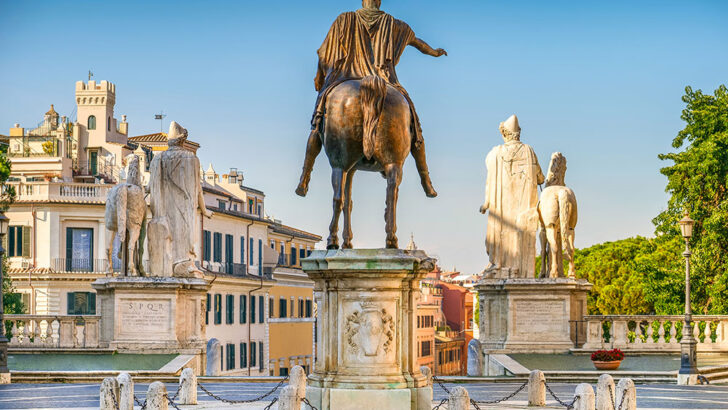Tony O’Reilly, who died at the weekend, did a lot for Ireland, quite beyond inventing the “Kerrygold” butter brand, although that is a noteworthy success. It was also about rebranding Ireland itself, as a country where people could thrive. In his unstinting work for the Ireland Funds, he advanced the Peace Process and worked consistently to attract jobs and investment into this country.
Entertain
He used to entertain at his stately home, Castlemartin, by Kilcullen in Co. Kildare, to which American business folk would be invited, so as to convince them that Ireland was a peaceful society worthy of support. I was present at some of these dinners – not as an entrepreneur but because Tony liked to include writers and journalists in his entourage. Unlike Tony O’Reilly himself, who was interested in everything from politics to sport to painting to literature, some of these overseas entrepreneurs had rather narrow fields of interest. But he was engaging to them.
“Tony was a practical Irish patriot. He wanted to see Ireland thrive”
He may have enjoyed the bauble of being dubbed a knight by HM Elizabeth II, (and his second wife Chryss was friendly with Queen Elizabeth on account of a shared passion for horses), but to me, Tony was a practical Irish patriot. He wanted to see Ireland thrive – that was why he spent hundreds of millions trying to save Waterford Crystal. It was an Irish brand of classical tradition. The problem was that young people weren’t offering crystal glass as wedding presents any more: fashion moves on.
Impact
He had a stellar career as sportstar, business magnate and media baron: his fortunes rose and fell, but none can gainsay the impact he made on the world. And I am certain that he ascribed the achievements of his life to his Jesuit education at Belvedere College in Dublin. He talked fondly of the encouragement he received at Belvedere, and how the priests “saw something” – his potential – in him as a young boy.
“Tony O’Reilly always remained loyal to the Jesuits”
They also treated with discretion an aspect of his life which would have been stigmatised in the 1940s: he was born out of wedlock, essentially because his father was already married when he formed a union with his mother. It was the Belvedere priests who explained this to Tony as a teenager in a way that helped him cope with what was then an unorthodox situation.
Jesuits
Tony O’Reilly always remained loyal to the Jesuits. Whether he was a religiously practising Catholic is not for others to judge. He installed a private chapel at Castlemartin; and he told me that “on the whole, the Catholic Church was admirable”. He didn’t agree with all its tenets, and may have been somewhat “a la carte”. He was, as the writer Charles Lysaght noted, “unmonogamous” by nature, and his first marriage crumbled thereby.
“He attained an old Irish aspiration “bás in Eireann”
But I think he was, basically, within the fold; and it is specially beautiful that he attained an old Irish aspiration “bás in Eireann.”
Who is the Michaelangelo of Pagan art?!
I was in Nenagh in North Tipp last week, and how lush and beautiful were the fields and the blossoms in the countryside.
The white blossom which I took to be hawthorn abounded, but I was informed that this was actually blackthorn, which flowers in May. There’s an old superstition that it’s unlucky to bring the blackthorn plant into the house for it belongs to the fairies.
This notion also existed in the English countryside. When my husband was a youngster in Wiltshire, he broke his arm; his mother was told by local people – “that’s a punishment for bringing the thorn flower into the house”.
These old folk pishógs endure, and I regard them as harmless fancies. And I accept them as country lore.
Legacy
But I am less amused by reports of the expansion of Paganism. In Britain, Paganism has grown, as a formal religion, from 44,000 in 2001 to 74,000 in 2022 (and 1.4 million now in the U.S.) It’s all to do with environmentalism, feminine power, tarot cards, witchcraft, Druidry, etc. (Colette Colfer linked this last week with Bambie Thug).
It’s not that I consider Pagan spirituality necessarily wicked, but it is mostly very boring. Where are the cathedrals? Where are the exquisite manuscripts? Who is the Michaelangelo of Pagan art? Who is the Mozart of its music? Where are the philosophers, the theologians, the intellectuals? Where are the saints?
A few interesting-looking rocks at Newgrange or Stonehenge are hardly to be compared with Notre Dame, Chartres, or Canterbury cathedral.
***
Speaking of art, the exhibition of portraits at the National Gallery, “Turning Heads” is well worth a visit. It focuses on the stunning portraiture developed in the Low Countries from the 17th century, like Rubens, van Dyck, Vermeer.
Rubens’ “Saint Peter Finding the Tribute Money” (1617-18) is such a vivid narrative showing Peter retrieving a coin from the mouth of a fish, as Christ directed him.


 Mary Kenny
Mary Kenny Michaelangelo’s statue of Emperor Marcus Aurelius in the Campidoglio or Roman Capitol in the heart of Rome.
Michaelangelo’s statue of Emperor Marcus Aurelius in the Campidoglio or Roman Capitol in the heart of Rome. 
